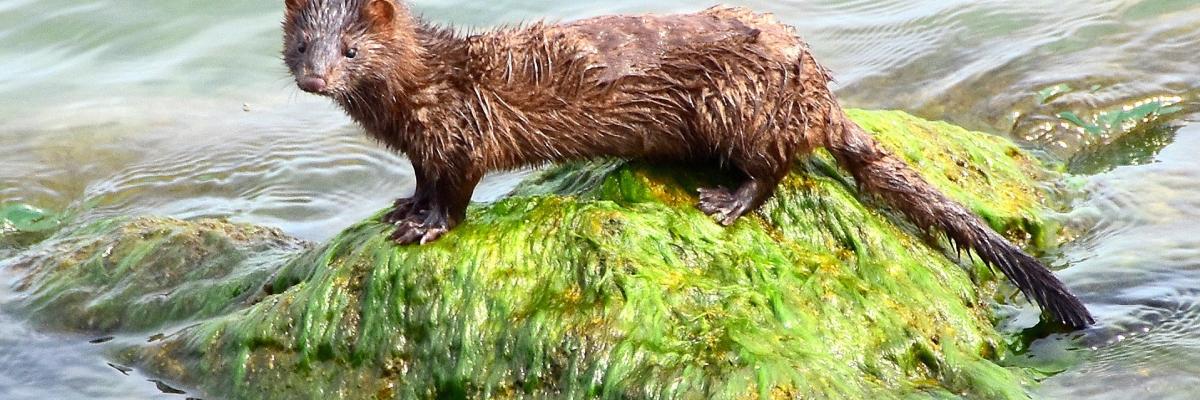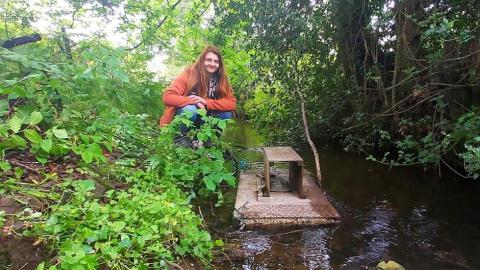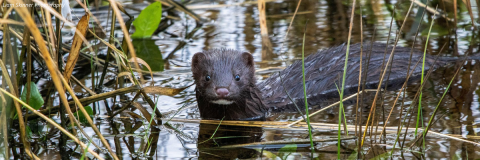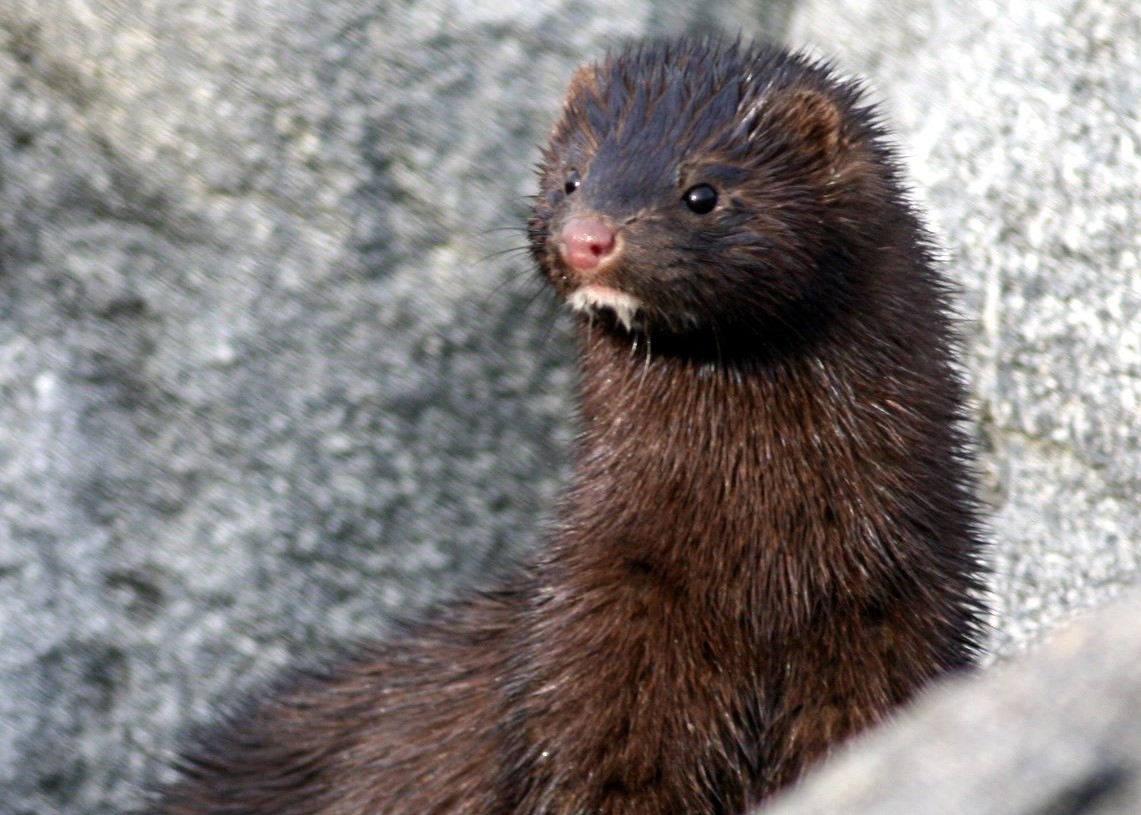
The American mink
The American mink (Neovison vison or Mustela vison) is a small, semi-aquatic mammal, which occupies both freshwater and saltwater habitats and follows waterways, lake edges and coasts. It belongs to the “Mustelid” family, so is related to the otter, stoat, pine marten and weasel. It has rich, usually dark brown fur (sometimes black), a narrow snout and a small white patch on the chin or throat (not always present). The tail is slightly bushy and approximately half the body length.
Mink are largely solitary will hold their own territory; an average mink territory along a linear waterway is 1-3km for a female, male territories are larger up to 5km and may overlap several female territories. When in contact with other individuals vocal signals consist of squeaks, chuckles and squeals.
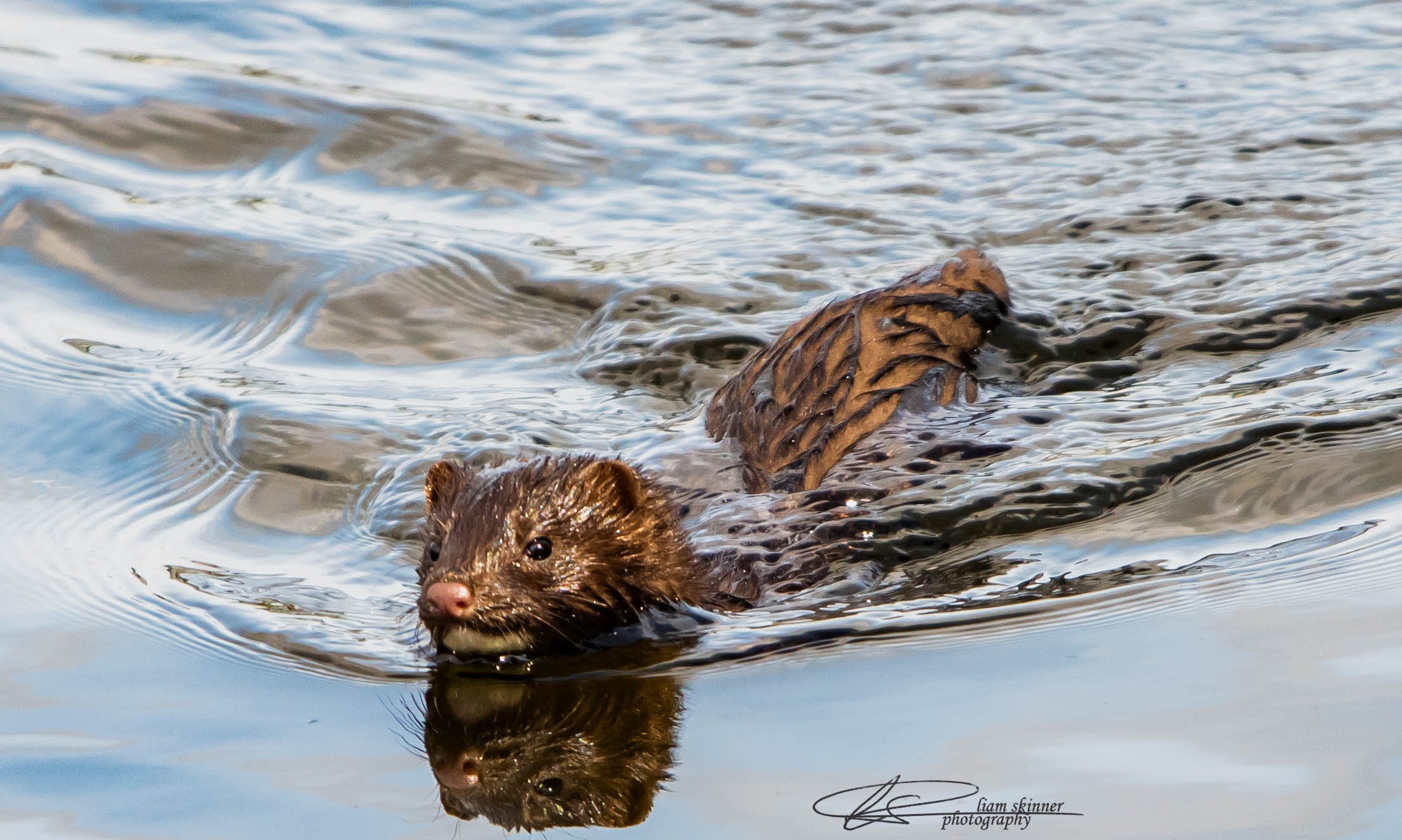
Mink are carnivores and eat a wide variety of prey including rabbits, water voles, rats, birds, eggs, fish and domestic fowl. They are an opportunistic hunter taking whatever prey is available at the time.
Mink breed once annually, with mating from February to April and births of between four to six kits occurring during April and May. The kits are weaned after eight weeks and will be fully independent by 14 weeks of age. They will have reached sexual maturity by the following spring.
Download the mink ID sheet
The story of American mink in Scotland - by Scourie Primary School
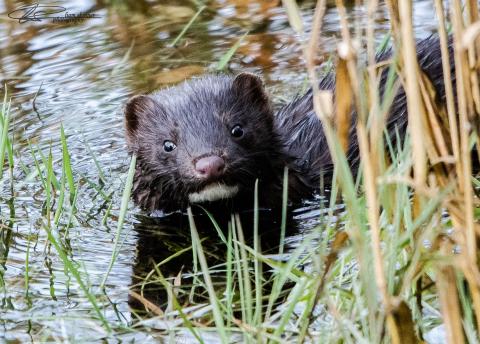
How did it get here?
The American mink, as the name suggests, is native to North America, and was brought to the UK to establish fur farms in 1929. Since then there were many escapes, as well as deliberate releases and mink were first confirmed as breeding in the wild in 1956.
The mink population grew and spread unchecked, (MAFF funded a small eradication programme in 1964, but this was wound up in 1970 when it was clear it was wholly inadequate). The fur farming industry in the UK was finally banned in 2000 under the Fur Farming (Prohibition) Act. The fur-farms still operating in the 1990's were the focus of attacks by animal rights activists however it is believed these mink, which were in effect domesticated, were quickly caught and the existing wild population of feralised mink stems from escapees in the 1920's.
The first Scottish fur farm opened in 1938 and mink escaped that same year. However the first reports of breeding mink in the wild in Scotland was in 1962 in Aberdeenshire, and a rapid spread of wild mink was seen between 1962 and 1974 mainly dispersing from the fur farms in the Firth of Forth and the Grampian areas. By the 1980's mink had started to be reported north of the Great Glen.
Mink are now widespread across the UK, with the exception of the far north of Scotland and some of the Scottish islands.
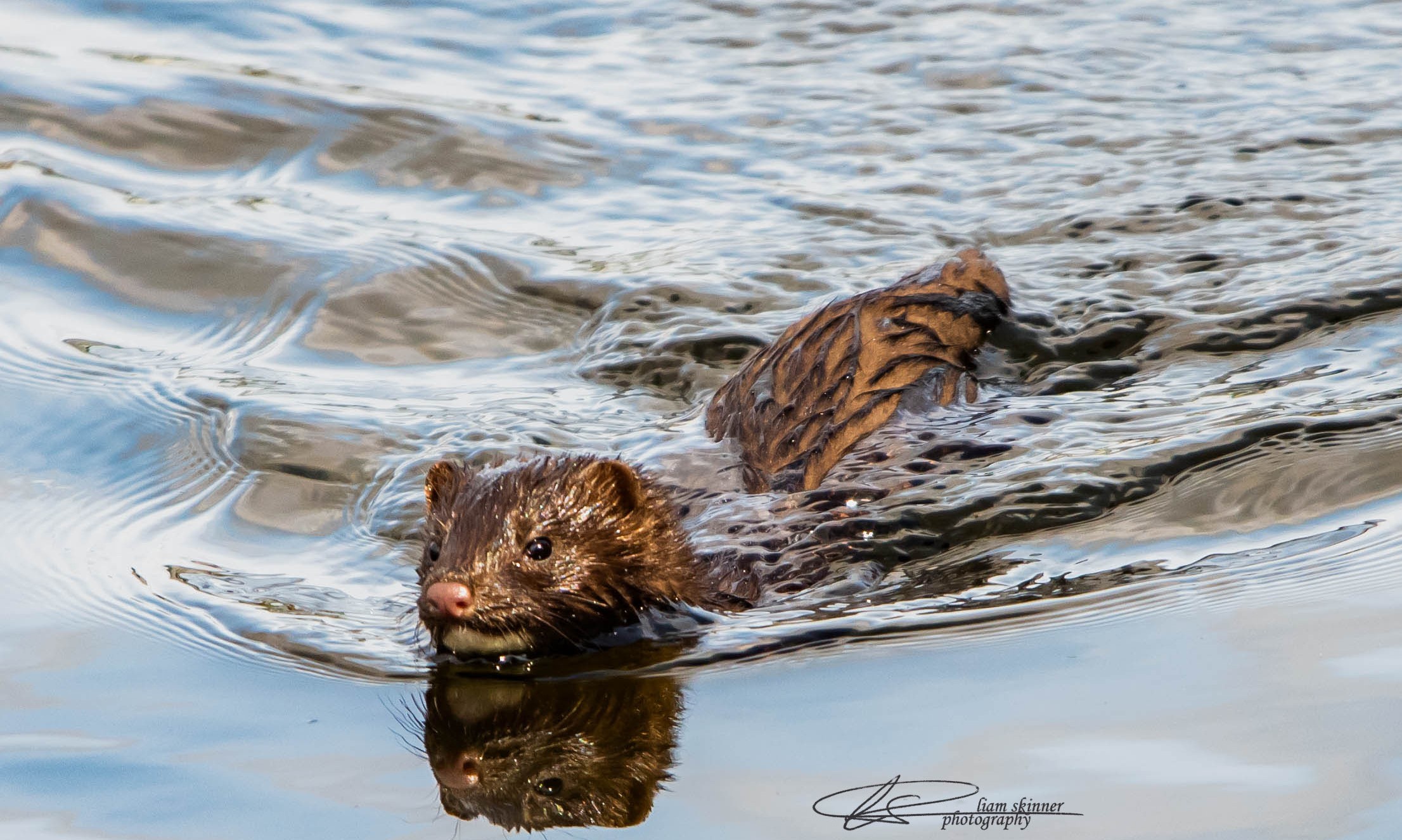
Problems caused by mink
Once mink are introduced to a region they spread naturally, having a strong capacity for colonisation and the ability to easily cross waterbodies including sea channels.
Mink can have significant adverse impacts once established, predominately through predation and competition. Mink are effective predators, eating birds & their eggs (native and domestic fowl), small mammals, fish, amphibians, shellfish and crustaceans. In particular; water vole and ground nesting bird populations are at risk from mink predation.
Mink are thought to be responsible for the disappearance of the moorhen from the Hebridean islands of Lewis & Harris. They are also credited with being responsible for the 94% decline in water vole populations.
As well as affecting native wildlife, mink have had an impact on economic activities such as fish farming, crofting, sports angling, game shooting and tourism.
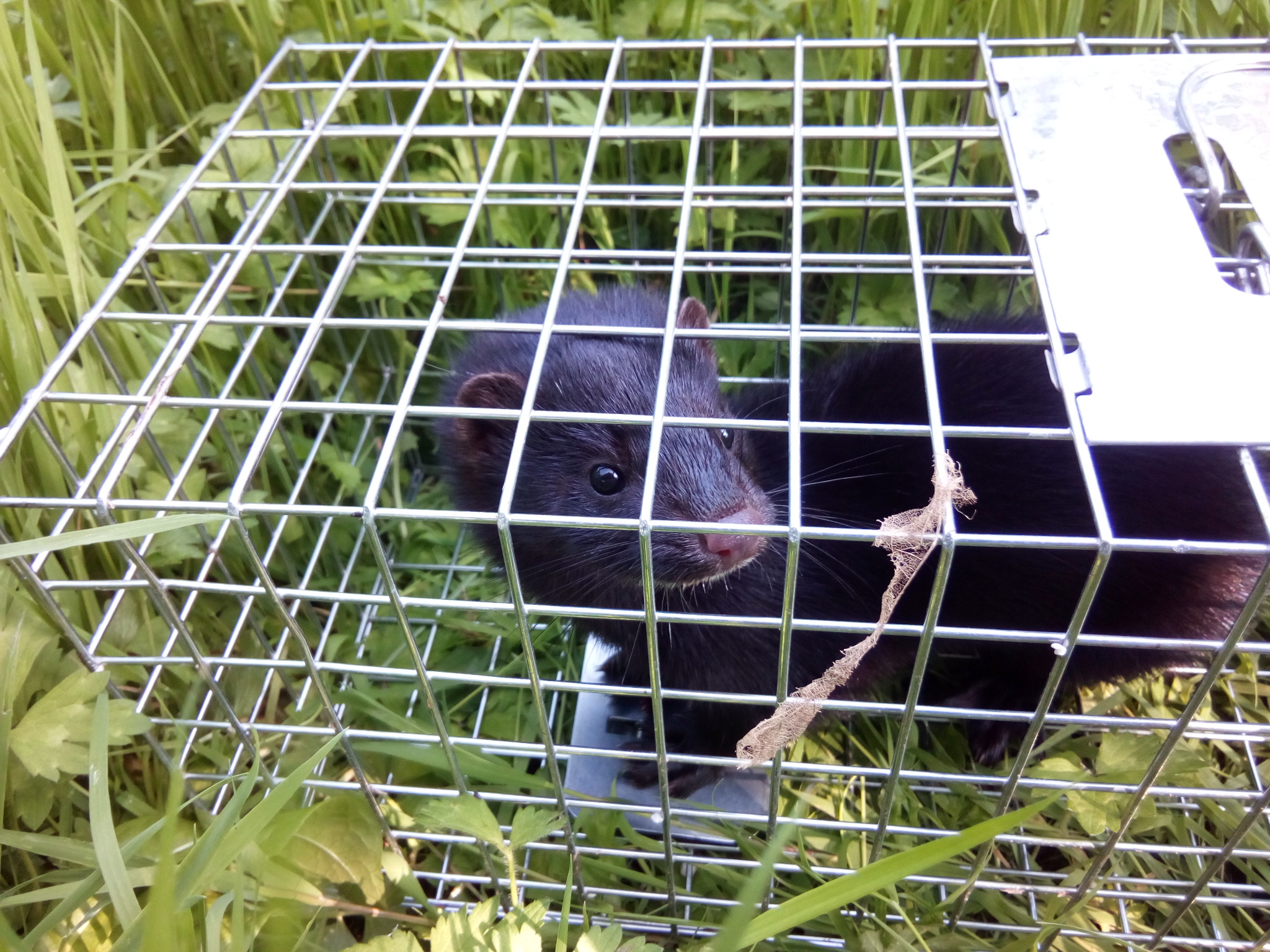
History of mink control
In 2004 one of the first mink control projects on mainland Scotland was initiated on a small river system in Aberdeenshire. Following years of mink eradication by a water bailiff along the River Ythan, zoologists at Aberdeen University noticed that this area was a stronghold for water voles, a creature in serious decline in most other areas of the north-east. And so the Ythan Rivers Project was set up, with such positive results this was scaled up across NE Scotland.
In 2006 two large-scale coordinated American mink control pilot projects started - in NE Scotland and in the Cairngorms National Park (2006-2009), followed by another pilot - the North West Highlands Mink Control Project (2009-2011). The Scottish Mink Initiative (SMI) then launched in 2011, demonstrating that mink control could be coordinated on a very large scale using a project based approach. As the SMI project progressed it shifted to co-ordination locally on the ground by fisheries trusts, rather than SMI Project Officers (2013).
A review in 2015 looked back at the previous 10 years of American mink control in Scotland to evaluate the activities and inform the development of the next phase - delivered through the framework of the Scottish Invasive Species Initiative. Download the SMI Review. (2015, Oliver, Mark: Scottish Mink Initiative review)
Of note from the SMI review;
- Since large scale coordinated mink control began in 2006, around 1600 mink have been trapped and removed from northern Scotland.
- The trends in long term mink abundance following control indicated that abundance will be more than halved following four years of control and reduced to <10% by year ten.
Mink control today
The Scottish Invasive Species Initiative is working in partnership with ten fishery trusts and boards and over 350 volunteers to monitor for, and trap, mink across the northern third of Scotland.
A network of around 650 rafts and traps, looked after by volunteers, extends across 43 river catchments providing comprehensive mink monitoring and trapping.

